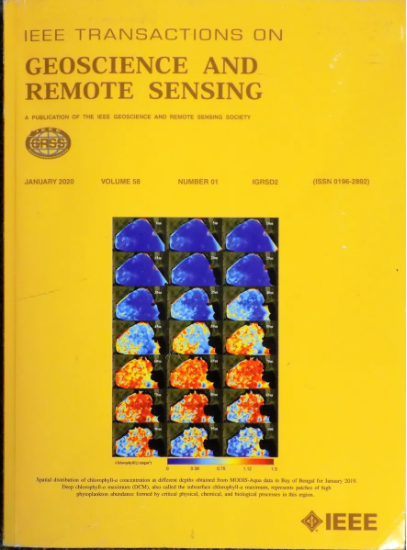机器学习在评估河流羽流扩散中的应用:识别和建模
IF 8.6
1区 地球科学
Q1 ENGINEERING, ELECTRICAL & ELECTRONIC
IEEE Transactions on Geoscience and Remote Sensing
Pub Date : 2024-12-02
DOI:10.1109/TGRS.2024.3509853
引用次数: 0
摘要
基于机器学习方法,提出了一种新的问题解决程序,包括数据收集,数据挖掘过程和特征分析,以加强河羽研究。在卷积神经网络(cnn)上开发了一个羽毛形状识别模型,并命名为“PlumeCatcher”。该模型用于从卫星图像中提取各种河流羽流特征。采用随机森林(random forests, RFs)数据挖掘方法研究了控制器对羽流发展的意义,包括风、流、水量和潮汐等动态因素,这些因素都是影响日、季节和年时间尺度上羽流特性的潜在因素。以南美洲哥伦比亚地区的Magdalena河为研究对象,研究结果表明,从河口开始,风是影响羽流运动的最敏感因素。此外,从短时间尺度(潮汐周期)到长时间尺度(年),羽流的面积、方向和扩展范围等特征都有变化,体现了羽流扩展的动态性。ML方法提供了一种有效方便的方法来绘制羽流特征并提取和分析其性质,这对未来的科学分析是有益的。本文章由计算机程序翻译,如有差异,请以英文原文为准。
Machine Learning Application for Evaluating River Plume Spreading: Identification and Modeling
Based on machine learning (ML) methods, a new problem-solving procedure is proposed here to enhance river-plume research, including data collection, data-mining processes, and characteristic analyses. A plume shape recognition model is developed, structured on convolutional neural networks (CNNs), and is named “PlumeCatcher.” This model is shown to extract various river-plume features from satellite images. The random forests (RFs) data-mining method was applied to investigate the significance of the controller on plume development, including dynamic factors such as wind, current, water discharge, and tides, all of which are potential factors that can influence plume properties on daily, seasonal, and annual timescales. Focusing on the Magdalena River in Columbia (South America), the results of the methodology indicate that wind is the factor with maximum sensitivity dominating plume movement starting from the river mouth. Moreover, the plume features including area, direction, and spreading range are varied from short timescales (tidal cycle) to long timescales (yearly) and demonstrate the dynamic nature of plume spreading. ML methods provide an effective and convenient way to map plume features and extract and analyze their properties, which is beneficial for future scientific analyses.
求助全文
通过发布文献求助,成功后即可免费获取论文全文。
去求助
来源期刊

IEEE Transactions on Geoscience and Remote Sensing
工程技术-地球化学与地球物理
CiteScore
11.50
自引率
28.00%
发文量
1912
审稿时长
4.0 months
期刊介绍:
IEEE Transactions on Geoscience and Remote Sensing (TGRS) is a monthly publication that focuses on the theory, concepts, and techniques of science and engineering as applied to sensing the land, oceans, atmosphere, and space; and the processing, interpretation, and dissemination of this information.
 求助内容:
求助内容: 应助结果提醒方式:
应助结果提醒方式:


